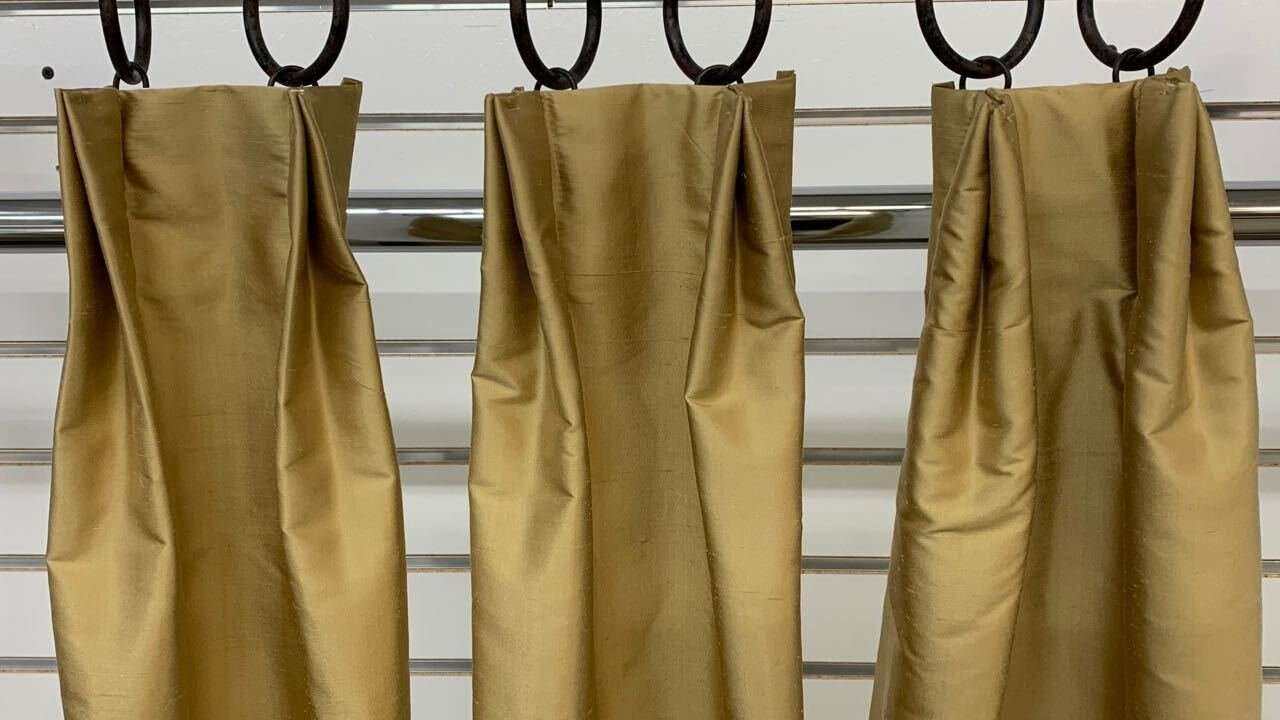linings: the undergarments for window treatments
Quality begins with a good foundation
When is the last time, if ever, you’ve thought about drapery linings? If your answer is never, that’s good! The purpose of drapery linings is to enhance window treatments but not take center stage. Linings are to window treatments as undergarments are to clothing. You shouldn’t think about them, but if they are doing their job, they make everything look good.
At a glance, a blog about linings may seem boring, so why spend any time on it? I’m fascinated by how things work and how they are made. If you are like me, you will be interested in learning about different types of drapery linings and what purpose they serve for window coverings. If you are a DIYer, this will be of interest to you as it will help decrease the time spent staring at linings at a store wondering which one to use.
Do you need lining?
No.
Some fabrics and window treatments look best left unlined. Sheers, such as functioning pinch pleated panels or stationary panels shirred onto a rod are usually left unlined. More casual treatments such as cafe curtains are often left unlined.
Linings provide insulation, control light coming into a room, add volume to and support the decorative fabric. Linings also present a consistent color to increase curb appeal.
Light filtering sheers on a traverse rod with stationary side panels.
Rod pocket top and bottom sheers on a door are also light filtering and help provide a level of privacy.
Sheer cafe curtains for privacy and a casual look.
Does it matter which lining is used?
Yes.
The most common choices are 100% cotton or polyester, and blends between the two. I know many workrooms and designers have a “go to” lining that is their default choice, but sometimes one lining may be better than another for a window treatment.
Cotton:
Nice hand and weight and works well with any fabric.
It holds a crease well: perfect for roman shades and functioning drapery panels.
Down side, wrinkles easily.
Polyester:
Doesn’t wrinkle, great for swags. Because it doesn’t wrinkle, may not be a good choice for drapery panels as it won’t “remember” the pleats.
Polyester fabrics often repel each other due to the static they create. Know the fiber content of the face fabric before using 100% polyester lining.
Often are inherently flame retardant. (check with the manufacturer to be sure).
Color:
The most common colors available for linings are white, ivory and pale ivory.
Be careful of which you choose as anything other than white may affect the color of the face fabric when it is light out.
For other colors like khaki or putty, other layers are needed to prevent the lining color from shadowing through.
I keep a variety of quality linings on hand which are perfect for any window treatment order I receive.
Specialty linings
In addition to the linings mentioned above, there are others which are used for specific purposes such as room darkening, insulation and volume.
Interlining:
Basically a white cotton flannel.
Adds body, drape and a luxurious feel to window treatments. It’s placed between the face/decorative fabric and the lining. Silks and silky type fabrics which are thin benefit from interlining - helping them to become more lush and full.
Interlining helps filter more light than lining alone, but does not block it.
Bump interlining:
This is a really thick flannel, perfect for stationary panels.
If you want to add a more luxurious touch, use bump.
Working with bump involves lots of special handling and exclusively hand sewing due to the bulk.
Two added benefits of interlinings are enhanced thermal and noise insulation of the window treatment.
Silk is beautiful but needs help to look soft and full. These pleated samples show the difference. Left: lining only; center: interlining and lining; right: bump and lining.
There is also a slight variance in the fabric color as light is more filtered with the different layers.
Close up of the samples with different layers. Left: sharp creases don't flatter silk; center: interlining really helps boost the fabric; right: bump - WOW!
Black out linings:
Used for room darkening, which creates an ideal sleep environment, or for keeping the color on the face fabric from fading out.
Black out lining also blocks ultraviolet sun damage to the interior of the home.
Today’s choices in black out linings have really improved from the stiff black out lining from 20 years ago.
Soft and flexible, black out lining comes in many colors to match or compliment an exterior.
Extra care needs to be taken when working with black out as pins and needles create light holes in the fabric.
In below freezing temperatures, black out lining breaks down and cracks.
The drapery panels and door panels have the same fabric. The door panels are lined with white cotton sateen and the drapery panels are lined with black out lining.
The light filtering through the lined and interlined shade changes the intensity of the color of the face fabric. Color of fabric on the cornice board is more "true".
Casement fabrics, which are a open, loose weave fabric, are usually left unlined. This is one of several panels that are lined with black out. The unlined fabric is shown behind the panel.
Is that it?
No, not even close. There are so many other types and colors to choose from, as well as brands and qualities. The linings I wrote about are the basics. If you want to know more, contact me. I’d love to talk to you, especially if you are new to this business! If you are interested in quality custom window treatments, give me a call. I enjoy helping homeowners and designers with solutions to their window treatment needs.









